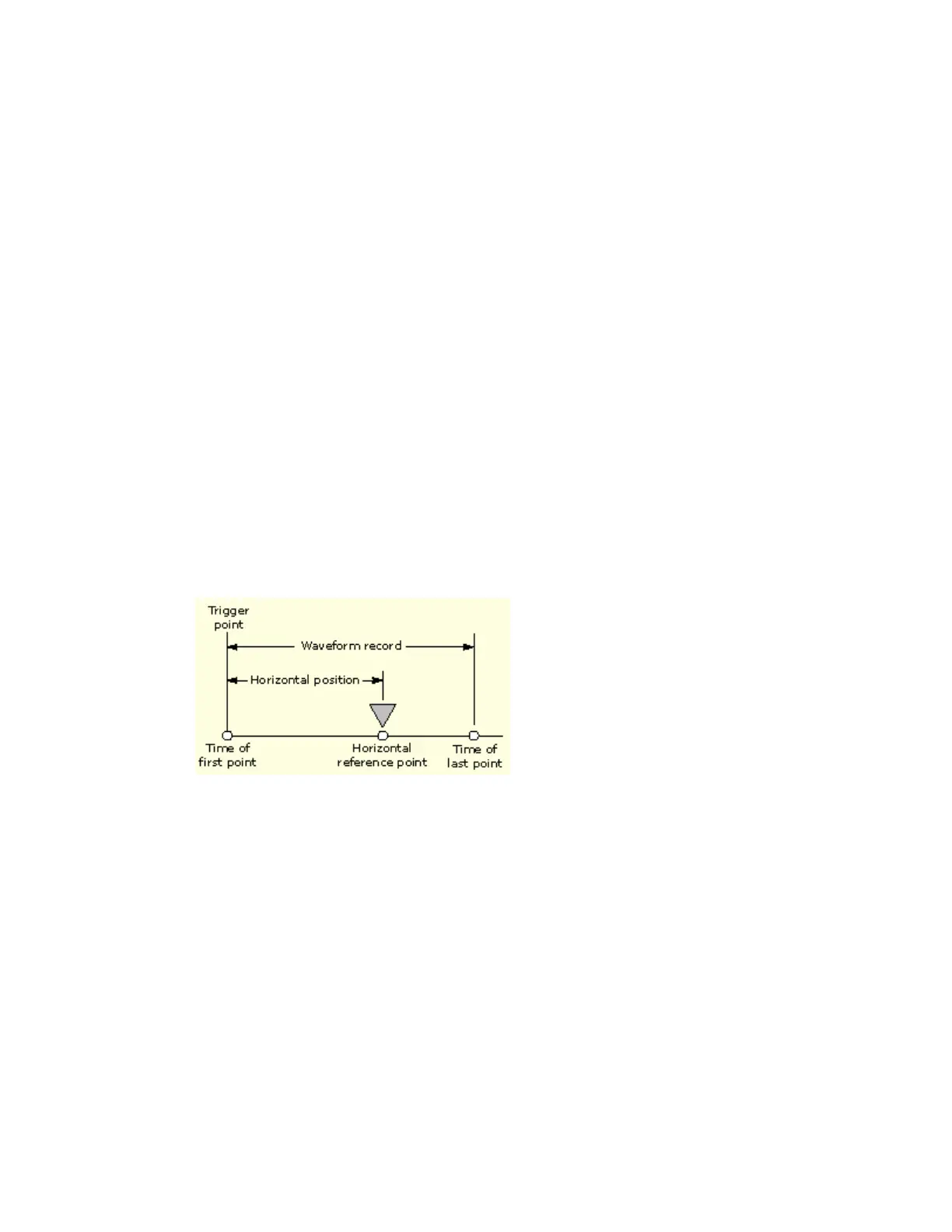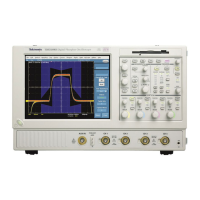255
Operations on the Time Base
In general, to adjust the time base, use the front-panel horizontal SCALE, RESOLUTION, and
POSITION knobs. Only channel waveforms can be set directly.
Here are some key points to remember about how horizontal operations relate to the waveform
types:
Reference waveforms are shown with the horizontal settings in effect at the time that they are
saved. You cannot adjust these settings. See Saving and Recalling Waveforms on page 289
more information on reference waveforms.
Math waveforms are shown with the horizontal settings derived from the math expression that
creates them. You cannot change these directly. See Creating or Using Math Waveforms for
more information on math waveforms.
All waveforms are displayed within the horizontal divisions that the graticule provides.
However, some waveforms may actually be wider or narrower than the display due to
acquisition rate/time scale combinations and acquisition preview.
Horizontal Position and the Horizontal Reference
Point
The time value you set for horizontal position is measured from the trigger point to the horizontal
reference point. This is not the same as the time value from the trigger point to the start of the
waveform record, unless you set the horizontal reference to 0%. See the following figure.
Interpolation
When the sample density falls to less than 1 sample per display column, the instrument must
calculate intermediate points to display a waveform. This process is called interpolation. There are
two options for interpolation:
Sin(x)/x interpolation computes record points using a curve fit between the actual values
acquired. It assumes that all the interpolated points fall along that curve.
Linear interpolation computes record points between actual acquired samples by using a
straight line fit. It assumes that all the interpolated points fall in their appropriate point in time
on that straight line.
For example, if an acquired record length is 500 points, a 2x zoom requires interpolation. If a
record length is 100K, horizontal zoom of 200x produces 1 sample per column (100,000/500 =
200); therefore, you will see interpolated samples starting at the next faster scale setting.

